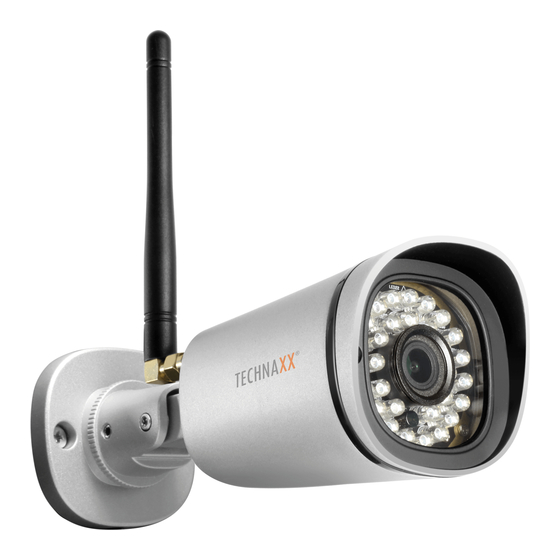
Table of Contents
Advertisement
I
P
-
C
a
I
P
-
C
a
T
X
-
6
1
T
X
-
6
1
I
P
-
C
a
I
P
-
C
a
o
u
t
d
o
o
u
t
d
o
Security and Disposal Hints for Batteries: Hold children off batteries. When a child
swallowed a battery go to a doctors place or bring the child into a hospital promptly!
Look for the right polarity (+) and (–) of batteries! Always change all batteries. Never use
old and new batteries or batteries of different types together. Never short, open, deform
or load up batteries! Risk of injury! Never throw batteries into fire! Risk of explosion!
Hints for Environment Protection: Packages materials are raw materials and can be
recycled. Do not disposal old devices or batteries into the domestic waste. Cleaning:
Protect the device from contamination and pollution (use a clean drapery). Avoid using
rough, coarse-grained materials or solvents/aggressive cleaner. Wipe the cleaned
device accurately. Important Notice: Should battery fluid leak from a battery, wipe the
battery case with a soft cloth dry. Distributor: Technaxx Deutschland GmbH & Co.KG,
Kruppstr. 105, 60388 Frankfurt a.M., Germany
m
H
D
m
H
D
m
F
u
l
m
F
u
o
r
T
X
o
r
T
X
User Manual
1
.
0
M
1
.
0
M
l
H
D
2
l
l
H
D
2
-
6
2
-
6
2
P
o
u
t
P
o
u
t
.
0
M
P
.
0
M
P
d
o
o
r
d
o
o
r
V1.0
Advertisement
Table of Contents






Need help?
Do you have a question about the TX-61 and is the answer not in the manual?
Questions and answers